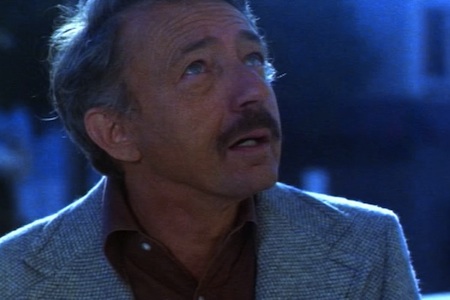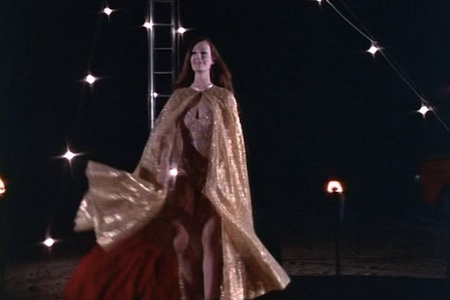It was never all that difficult to find movies by cult figures as disparate as Russ Meyer, Herschell Gordon Lewis, Doris Wishman or Jamaa Fanaka, filmmakers from the time when it was possible to make a decent living producing low-budget independent “exploitation” flicks that catered to drive-ins and grindhouses in the ’60s and ’70s, late-night cable and video rental stores in the ’80s. It’s highly doubtful the same is true today, as all those avenues are gone. Yet online access means it’s now easier than ever before to get a handle on the more obscure talents that were previously represented only in scattershot fashion by erratic, often miniscule home-format releases by companies that have since gone out of business, just as most of these directors and producers have moved on, vanished or died outright. You can begin to piece together careers of folk who were little more than question marks on the Internet Movie Database, people with teasingly prolific resumes filled with curious titles it once seemed one would probably never get a chance to see.
A case in point is John Hayes, a man who wore many hats—director, writer, producer, editor and sometime actor—and made 25 low-budget features over nearly 30 years of cinematic activity that ended 15 years before his demise from cancer at age 70 in 2000. What he was up to during those last years we can’t tell you, because biographical info on Hayes is scarce. In addition, some of his films seem lost, or at least MIA in terms of viewing opportunities. But between a pair recently added to Fandor, several carried by specialty label Something Weird, YouTube uploadings and whatnot, the late Mr. Hayes is a mystery gradually coming into focus.
You can begin to piece together careers of folk who were little more than question marks on the Internet Movie Database, people with teasingly prolific resumes filled with curious titles it once seemed one would probably never get a chance to see.
It’s an offbeat career to be sure, with an arc from Oscar to porn, encompassing numerous exploitable genres in between. A New Yorker, Hayes started out making shorts—his 1958 two-reeler The Kiss was nominated for an Academy Award—before moving to the West Coast and into commercial features. They were, however, well outside the Hollywood mainstream, which is where he’d remain as a filmmaker.
Three among his earliest were heavy-breathing black-and-white melodramas with an oddball mix of sexploitation and verbose moralizing. All starred Hayes’ purported love of the time, a starlet whose subsequent fame has lent them a mild notoriety: None other than Rue McClanahan, the bubbly comedienne who became Bea Arthur’s sidekick on TV’s Maude, then The Golden Girls. She’s none too funny in the curiously grim titillators The Grass Eater (1961, now apparently a lost film), 1963’s Five Minutes to Love a.k.a. The Rotten Apple (as “Poochie, the Girl in the Shack”) and 1968’s Walk the Angry Beach a.k.a. Hollywood After Dark (as a burlesque dancer).
These bleak, talky (“I’m offering you this money to climb up out of hell!”) chunks of reluctant sleaze probably didn’t exactly burn up the grindhouse box-office. So Hayes stopped burdening his films with Off-Off-Broadway dialogue and pretentions toward Meaning, instead going for the grimy gusto in a variety of cheap genre vehicles: Hillbilly sex comedies (All the Lovin’ Kinfolk , The Farmer’s Other Daughter, a.k.a. Hayseed Hooker ), war programmers (Shell Shock , The Cut-Throats ), softcore (Help Wanted Female, Alimony Lovers, Sweet Trash ), a B western (Fandango), an urban cop meller (The Hang Up ), and one of those very early ’70s what-is-reality-and-what-is-illusion? psychological thrillers (1970’s Dream No Evil, now on Fandor). The latter starred Brooke Mills as an orphan turned tentshow evangelist’s helpmate (she dives from a high platform onto a sponge pile representing “the fires of Hell”), but also featured veteran Hollywood character actor Edmond O’Brien of noir classic D.O.A.
That heralded the beginning of Hayes’ most mainstream period (relatively speaking), in which he made his best-remembered films (ditto) and used several well-known actors (even if they probably didn’t consider these jobs a career highlight) alongside his usual subterranean favorites like frequent male lead Tony Vorno. Familiar to low-budget horror completists are two from 1972, goofy zombie flick Garden of the Dead (trivia note: there is no garden anywhere in this film) and Grave of the Vampire. 1974’s Big Bad Mama / Bloody Mama knockoff Mama’s Dirty Girls had aging “Golden Age” star Gloria Grahame as a very bad mother to homicidal sexpots including ’70s exploitation queens Candice Rialston and Sondra Currie.
It’s an offbeat career to be sure, with an arc from Oscar to porn, encompassing numerous exploitable genres in between. A New Yorker, Hayes started out making shorts—his 1958 two-reeler ‘The Kiss’ was nominated for an Academy Award—before moving to the West Coast and into commercial features. They were, however, well outside the Hollywood mainstream, which is where he’d remain as a filmmaker.
The biggest name Hayes ever worked with was Christopher Lee, who played a priest overseeing a convent of nuns—but really they’re all space aliens—in 1977’s End of the World, which also featured Sue Lyons (Lolita), Dean Jagger, Lew Ayres and other familiar screen faces. This sci-fi saga was probably the director’s most widely distributed effort, even if (like many of his lesser-remembered ones) it seemed dominated by nighttime scenes of people running around outside. Some flashing lights and stock disaster footage aside, the biggest FX was a climactic planetary explosion in which Earth turns out to be comprised of an eggshell-like crust and lots of gold glitter inside.
Yet just before and after this putative career peak Hayes made more softcore flicks (like Convicts’ Women and Jailbait Babysitter) as well as triple-X hardcore ones. The latter, Baby Rosemary and Hot Lunch, featured some of the best-known adult stars of the era and were directed by him under the pseudonym Harold Perkins. Perhaps seeing that this was where his work was headed—rather than further toward the mainstream—his last non-porn film was the sex-ridiculing Up Yours a.k.a. Up Your Ladder. That 1979 smirkathon was very much in the vein of Me Decade drive-in dirty joke-fests like Is There Sex After Death? and If You Don’t Stop It You’ll Go Blind, with the novel hook that it’s a series of tell-all anecdotes about naughty tenants told by the sexy blonde “spirit” of an apartment building (Cindy Morgan, who later achieved a modicum of fame in the original Tron and Caddyshack ). Available on Fandor, it lets you know what you’re in for right away with an opening theme song whose lyrics include “Wacka-wacka-wacka/Zinga-zinga-zinga/Everybody loves to laugh.”
The biggest name Hayes ever worked with was Christopher Lee, who played a priest overseeing a convent of nuns—but really they’re all space aliens—in 1977’s ‘End of the World,’ which also featured Sue Lyons (Lolita), Dean Jagger, Lew Ayres and other familiar screen faces. This sci-fi saga was probably the director’s most widely distributed effort.
In the 1980s, Hayes turned exclusively to porn, directing some features (Pleasure Zone, parts of the omnibus Working Girls ) and writing others (like Purely Physical). Perhaps this wasn’t the way he’d hoped things would turn out, since 1985 saw his last known screen credit. It was, incongruously, the most high-profile assignment he’d ever gotten: As director for hire on “The Madness Room,” an episode of supernatural series Tales from the Darkside. Starring Hollywood veteran Stuart Whitman as the wealthy older husband of a young would-be medium, it probably scored more viewers over years of syndicated reruns than had seen John Hayes’ entire oeuvre to date.
Why he left the business at that juncture is anyone’s guess—information on that score didn’t surface during research for this article that dug up very little about Hayes at all. Sometimes endearingly clunky, sometimes downright odd, sometimes just dull in the way that churned-out, zero-budget, formulaic genre films often wind up being, his movies form an eccentric, still-incomplete whole picture. If only he were still around to explain its subterranean mysteries.





